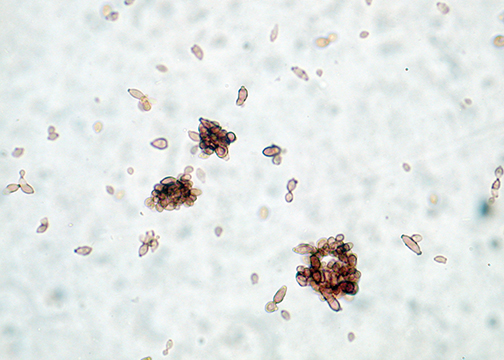

Sun staff
Fungi such as shelf fungi and Cladosporium that flourish in this region during the summertime could leave many residents sniffling and sneezing.
Shelf, or bracket, fungi produce fruiting bodies called conks that are often shaped like shelves, brackets or circles; the fungi is often found on trees, both living and dead.
Cladosporium, which includes some of the most common molds that are found both indoors and outdoors, can be found on living and decaying plant material.
Both fungi produce spores and grains that, “unfortunately have an impact on people’s sinuses and a variety of the allergy reactions,” Joy Landry, public relations specialist for the Southwest Ohio Air Quality Agency, said.
The agency, which monitors air quality and regulates industrial air emissions for Butler, Clermont, Hamilton and Warren counties, has been conducting mold and pollen counts each weekday since 1986.
“We are counting natural airborne allergens produced by trees and grasses, as a component air quality,” Landry explained.
She added, “We’re just a little bit elevated this year.”
The agency uses testing equipment on the roof of their building, located at 250 William Howard Taft Road in Cincinnati, to produce its reports.
A technician collects mold and pollen from a rod that has been in place for 24 hours. The samples are then read under a microscope to determine the day’s readings.
Reports are available at 10 a.m.
“We believe this method gives us a good picture of the previous 24 hours,” Landry said.
She added, “Many people don’t feel the effects of the allergens until 24 hours after exposure anyway, so it pairs up well.”
The average daily reading for the past 10 years for the month of July is 1,942 spores per cubic meter of air. This year’s readings for July average 2,102 spores per cubic meter.
“We’re really close,” Landry said. “We’re about where we should be with all the humidity we’ve been experiencing.”
The agency considers mold readings between 0 and 500 as low, 501 and 1,500 as moderate, 1,501 to 5,000 as high and more than 5,000 as very high.
While the fungi and the spores they produce are a part of nature’s progression, Landry suggested steps that allergy suffers can take to mitigate exposure.
Sufferers should minimize their outdoor activities from 5 to 10 a.m., when mold is most prevalent, use their air conditioners to filter out allergens, remove their sneakers, which may have residual allergens, when stepping indoors and avoid areas with freshly cut grass.
She also noted that sufferers should work with their medical care providers when seeking relief from seasonal allergies.
To review the Southwest Ohio Air Quality Agency’s weekday mold and pollen reports, visit its webpage at www.southwestohioair.org/air-quality-data/pollen-mold.html.
Additionally, the agency has developed an informational brochure called “Living with Allergies” which is also available online at www.southwestohioair.org/uploads/LivingWithAllergies.pdf.
